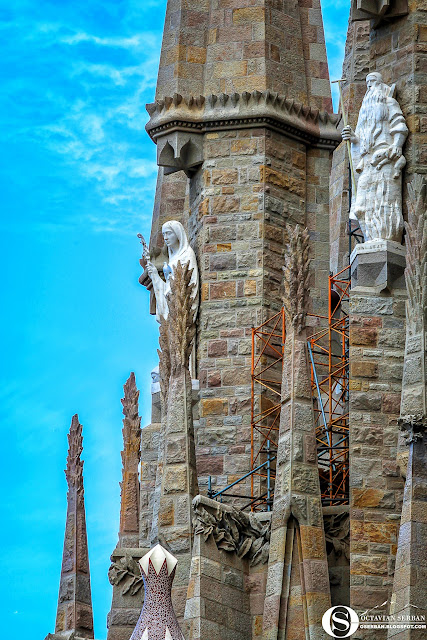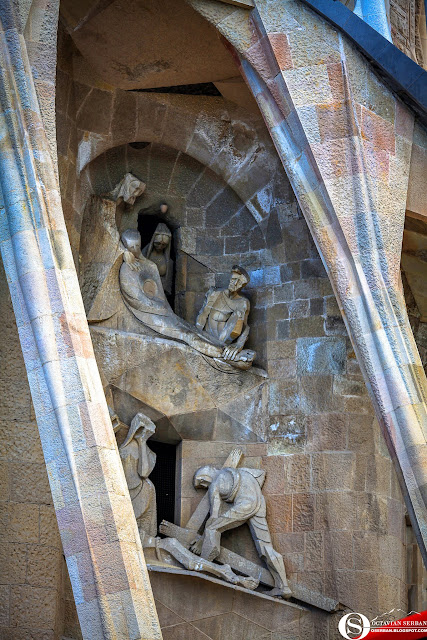The Basílica i Temple Expiatori de la Sagrada Família (Basilica and Expiatory Church of the Holy Family) is a large Roman Catholic church in Barcelona, designed by Spanish architect Antoni Gaudí (1852–1926). Although incomplete, the church is a UNESCO World Heritage Site, and in November 2010 Pope Benedict XVI consecrated and proclaimed it a minor basilica,as distinct from a cathedral, which must be the seat of a bishop.
Construction of Sagrada Familia commenced in 1882 by architect Francisco Paula de Villar with Gaudí becoming involved in 1883 after Francisco resigned as the head architect . Taking over the project, Gaudí transformed it with his architectural and engineering style, combining Gothic and curvilinear Art Nouveau forms. Gaudí devoted his last years to the project, and at the time of his death at age 73 in 1926, less than a quarter of the project was complete.
The Church will have three grand façades: the Nativity façade to the East, the Passion façade to the West, and the Glory façade to the South (yet to be completed). The Nativity Façade was built before work was interrupted in 1935 and bears the most direct Gaudí influence. The Passion façade was built after the project which Gaudi planned in 1917. The construction began in 1954, and the towers, built over the elliptical plan, were finished in 1976. It is especially striking for its spare, gaunt, tormented characters, including emaciated figures of Christ being scourged at the pillar; and Christ on the Cross. These controversial designs are the work of Josep Maria Subirachs. The Glory façade, on which construction began in 2002, will be the largest and most monumental of the three and will represent one's ascension to God. It will also depict various scenes such as Hell, Purgatory, and will include elements such as the Seven Deadly Sins and the Seven Heavenly Virtues.
Passion Façade
Facing the setting sun, indicative and symbolic of the death of Christ, the Passion Façade is supported by six large and inclined columns, designed to resemble sequoia trunks. Above there is a pyramidal pediment, made up of eighteen bone-shaped columns, which culminate in a large cross with a crown of thorns. Each of the four towers is dedicated to an apostle (James, Thomas, Philip, or Bartholomew) and, like the Nativity Façade, there are three porticos, each representing the theological virtues, though in a much different light.
The scenes sculpted into the façade may be divided into three levels, which ascend in an S form and reproduce the Via Crucis of Christ. The lowest level depicts scenes from Jesus' last night before the crucifixion, including The Last Supper, Kiss of Judas, Ecce Homo, and the Sanhedrin Trial of Jesus. The middle level portrays the Calvary, or Golgotha, of Christ, and includes The Three Marys, Saint Veronica, Saint Longinus, and a hollow-face illusion of Christ. In the third and final level the Death, Burial and the Resurrection of Christ can be seen. A bronze figure situated on a bridge creating a link between the towers of Saint Bartholomew and Saint Thomas represents the Ascension of Jesus.










































No comments:
Post a Comment